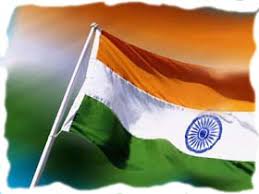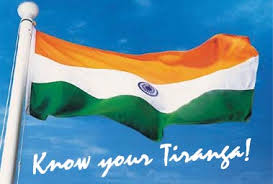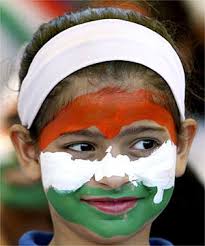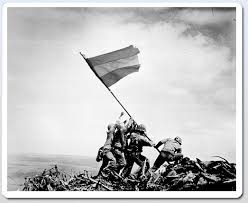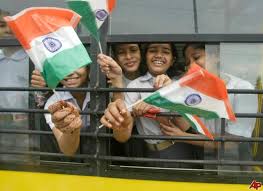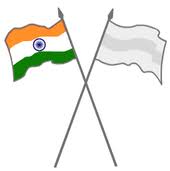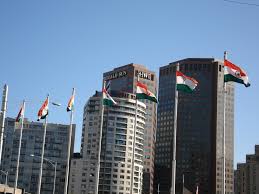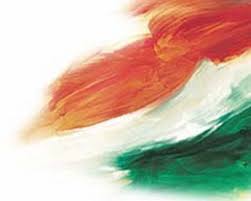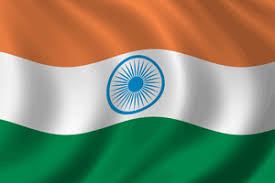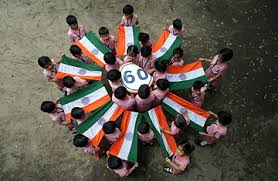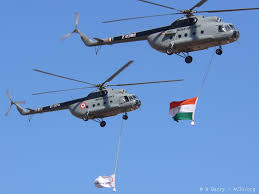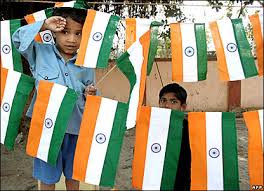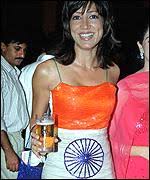
he National Flag of India was adopted in its present form during an ad hoc meeting of the Constituent Assembly held on the 22 July 1947, twenty-four days before India's independence from the British on 15 August 1947. It has served as the national flag of the Dominion of India between 15 August 1947 and 26 January 1950 and that of the Republic of India thereafter.[3] In India, the term "tricolour" (Hindi: तिरंगा, Tirangā) almost always refers to the Indian national flag.
The national flag, adopted in 1947, is based on the flag of the Indian National Congress, designed by Pingali Venkayya. The flag is a horizontal tricolour of "deep saffron" at the top, white in the middle, and green at the bottom. In the centre, there is a navy blue wheel with twenty-four spokes, known as the Ashoka Chakra, taken from the Lion Capital of Asoka erected atop Ashoka pillar at Sarnath. The diameter of this Chakra is three-fourths of the height of the white strip. The ratio of the width of the flag to its length is 2:3.[4] The flag is also the Indian Army's war flag, hoisted daily on military installations.
The official flag specifications require that the flag be made only of khadi, a special type of hand-spun cloth made popular by Mahatma Gandhi; while these specifications are widely respected within India, they are frequently ignored in the manufacture of Indian flags outside of the country. The display and use of the flag are strictly regulated by the Indian Flag Code.[4] A heraldic description of the flag would be Party per fess Saffron and Vert on a fess Argent a "Chakra" Azure.
Design:-

List of Indian flags:
National Flag:
| Flag | Date | Use | Description |
|---|
 | 1947 - Present | Flag of India | A horizontal tricolour of saffron at the top, white in the middle and green at the bottom. In the centre is a navy blue wheel with twenty-four spokes, known as the Ashoka Chakra |
Civil Ensign
| Flag | Date | Use | Description |
 |
| Civil Ensign | Red Ensign with the Flag of India in the canton |
Military Flags
| Flag | Date | Use | Description |
 |
| Flag of the Indian Army | The Army badge on a red field with the Flag of India in the canton |
 |
| Flag of the Indian Navy | A white ensign with the Flag of India in the canton |
 |
| Flag of the Indian Air Force | A blue ensign with the Flag of India in the canton, with the roundel of the Indian Air Force |
 |
| Flag of the Indian Coast Guard | A blue ensign with the Flag of India in the canton, and the Coast Guard's badge |
States and Union territorial flags
The states and Union territories do not have official flags, except for Jammu and Kashmir.
| Flag | Date | Use | Description |
 (Jammu and Kashmir, India) (Jammu and Kashmir, India) | 1972 - present | Flag of the Indian state of "Integral part" since the 1950 constitution | The flag of Jammu and Kashmir is red to symbolize labour, with three white vertical stripes in the hoist (which do not run the whole height of the flag). The stripes stand for the three divisions of the region currently under its control namely; (Jammu, Kashmir, and Ladakh). On the right side of the flag is a white plough with the handle facing the stripes. The ratio of the flag to its width is 3:2. |
Historical






















